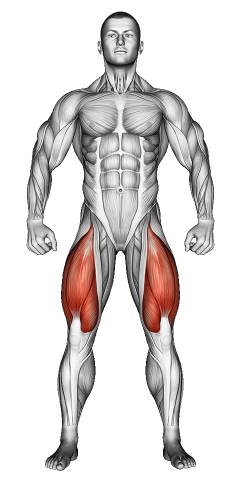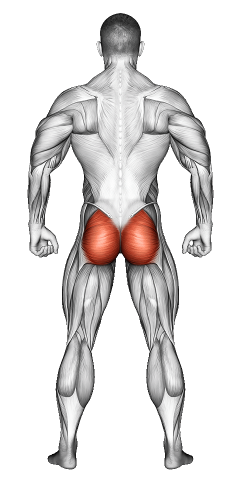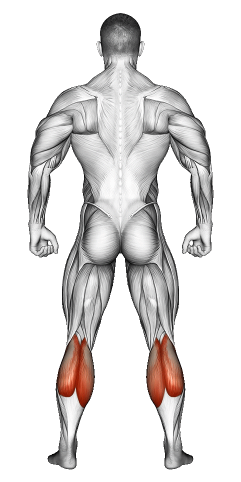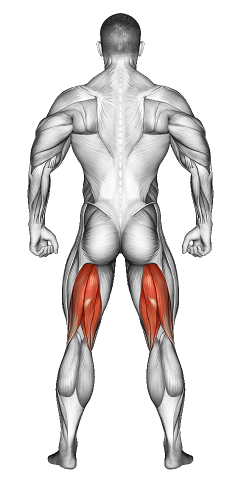Bodyweight Jump Squat: Video Tutorial & Exercise Guide

Written By: Claude Michael
Updated: Oct 13, 2024
| Workout | Bodyweight Jump Squat |
| Primary Muscle Group | Quads |
| Secondary Muscle Group | Glutes, Calves Hamstrings |
| Equipment Required | Bodyweight |
| Force Type | N/A |
| Mechanics | Compound |
| Exercise Type | Strength |
| Difficulty | Beginner |
Bodyweight Jump Squat: Video Tutorial & Exercise Guide
- 1.Bodyweight Jump Squat: Muscle Groups
- -1.1Primary Muscle Group
- -1.2Secondary Muscle Group
- 2.Bodyweight Jump Squat: Step-by-Step Guide
- 3.Bodyweight Jump Squat: Overview
- 4.Bodyweight Jump Squat: Benefits
- 5.Bodyweight Jump Squat: Pro Tips & Advanced Techniques
- 6.Bodyweight Jump Squat: Progression Plan
- 7.Bodyweight Jump Squat: Frequently Asked Questions (FAQs)
Secondary Muscles Group
Bodyweight Jump Squat: Step-by-Step Guide
- Step 1: Stand with your feet shoulder-width apart, toes pointing slightly outward. Keep your chest up and your core engaged.
- Step 2: Begin by lowering your body into a squat position, bending your knees and pushing your hips back as if sitting in a chair. Ensure your knees track over your toes and your thighs are parallel to the ground.
- Step 3: From the squat position, explode upward by pushing through your heels, extending your legs, and jumping as high as you can.
- Step 4: Land softly on the balls of your feet, immediately bending your knees and returning to the squat position to absorb the impact.
- Step 5: Repeat the movement for the desired number of repetitions, ensuring controlled landings and proper squat form throughout.
Bodyweight Jump Squat: Overview
The Bodyweight Jump Squat is a high-intensity plyometric exercise that targets the lower body muscles, including the quads, hamstrings, glutes, and calves. This movement combines the strength-building benefits of squats with the explosive power of jumping, helping to improve lower body strength, power, and endurance.
Jump squats are also excellent for cardiovascular fitness and fat burning, making them a great addition to any workout routine, particularly for those looking to enhance athletic performance or conditioning.
Bodyweight Jump Squat: Benefits
Bodyweight Jump Squats improve lower body strength, explosiveness, and endurance. The exercise targets the quads, hamstrings, glutes, and calves, while also improving coordination and agility. The explosive nature of the movement increases power output, making it ideal for athletes involved in sports that require sprinting, jumping, or quick direction changes.
Jump squats are also a great cardiovascular exercise, helping to burn fat and improve cardiovascular endurance due to the high-intensity nature of the movement.
Bodyweight Jump Squat: Pro Tips & Advanced Techniques
Focus on landing softly by absorbing the impact through your legs. Keep your core engaged throughout the movement to maintain balance and protect your lower back. For added difficulty, you can increase the height of your jumps or add resistance by holding a weight or using a resistance band. Remember to avoid collapsing your knees inward during the squat, and always land with bent knees to reduce impact on the joints.
Bodyweight Jump Squat: Progression Plan
Beginner
Intermediate
Advanced
Bodyweight Jump Squat: Frequently Asked Questions (FAQs)
What muscles do Bodyweight Jump Squats target?
+Bodyweight Jump Squats primarily target the quads, hamstrings, glutes, and calves while also engaging the core for stability.
Can beginners perform Bodyweight Jump Squats?
+Yes, beginners can perform this exercise, starting with fewer reps and focusing on proper form before increasing intensity and volume.
How can I make Bodyweight Jump Squats more challenging?
+You can increase the height of your jumps, add weight (such as a dumbbell), or increase the number of repetitions to make the exercise more challenging.
What common mistakes should I avoid during Bodyweight Jump Squats?
+Avoid landing with straight legs, as this can put stress on your knees. Always land with bent knees to absorb the impact, and make sure your knees don't collapse inward during the squat phase.
How often should I include Bodyweight Jump Squats in my routine?
+Include this exercise 1-2 times per week as part of your lower body or cardiovascular workout to improve leg strength and power.
Share
Don’t Wish for It, Work for It – Join the FlexXP Newsletter Today!
Thank you for signing up for the FlexXP Newsletter!
This site is protected and the Google Privacy Policy and Terms of Service apply.



